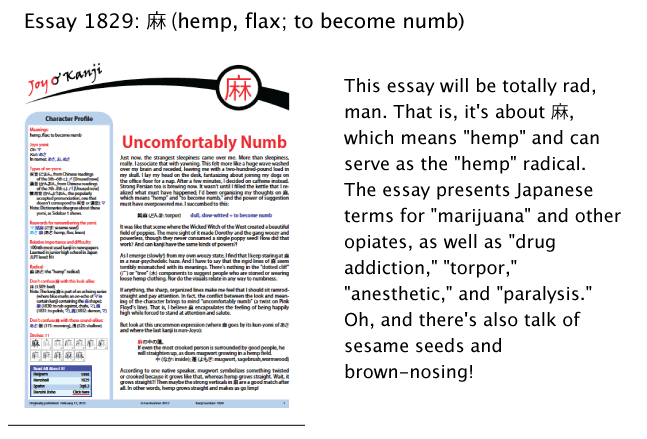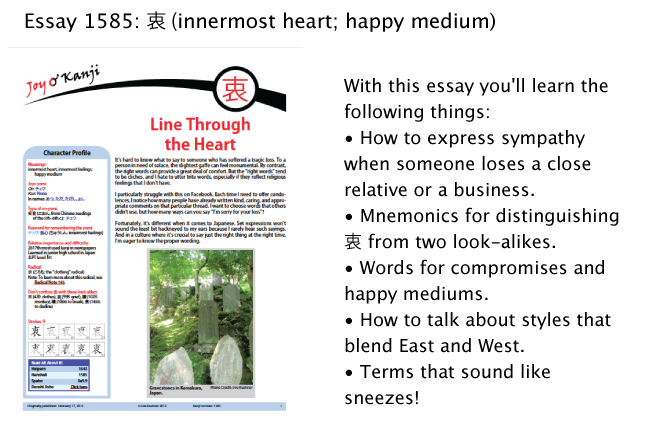Dyeing for Hemp
Last weekend my husband and I had a houseguest, an American who has lived in rural Japan for 20 years (in a valley filled with monkeys!).
I barely knew anything about Richard before he arrived. He's a friend of a friend on Facebook, and I've had little contact with the person who connects us. But as I've since learned, Richard has absorbed all things Japanese over the last two decades, including traditional dyeing methods. Using those as a basis, he has developed his own patterns, and he now dyes things for a living, churning out an astounding assortment of materials.
Check out these pants! He made them! They're called 股引 (ももひき: close-fitting trousers; working trousers; long johns, thigh + pulling). They fall into the larger category of 野良着 (のらぎ: clothes for doing farmwork or working in fields, field + good + to wear).
Photo Credit: Eve Kushner
Grateful for a place to stay, he brought a sampling of his amazing work, asking us to choose what we liked. As he arranged cloths on our kitchen counter with his permanently purple fingers, I gazed at the colorful array of geometric patterns and felt as if I were looking through a kaleidoscope. It was hard to decide, but I finally did:
Photo Credit: Eve Kushner
I'm in love with this 手拭い (てぬぐい: hand + to wipe), which he characterizes as "布巾 (ふきん: dishcloths) dyed in a fancy way." Too pretty to use for wiping tables and such, his 手拭い will ideally serve as accessories. I've found a perfect place for mine in our bedroom, where it will go higher on the wall than it is in the picture above. (For now I've just draped it over a photo. The idea of driving nails through this beautiful cloth and into our wall fills me with terror. These things never go well for me. I'll call in a nail-pounding expert!)
Richard keeps up a vibrant stream of chatter, and his favorite topic is hemp. He comes back to it again and again. Hemp in India, hemp in Nepal, hemp in Japan, hemp in California—I learned an immense amount! Not surprisingly, he often includes the hemp leaf pattern in his work. In fact, the right leg of his wild and crazy 股引 pants features two samples of the pattern:
Photo Credits: Richard Carbin
Known in Japanese as 麻柄 (あさがら: hemp + pattern), this word is short for 麻の葉柄 (あさのはがら: hemp + leaf + pattern). According to Richard, 麻柄 is “SUPER-popular in Japan among hippies; natural, slow-life aficionados; and of course potheads.”
My proofreader tells me that people often use this pattern in babies’ clothes, associating it with healthy and quick growth because hemp grows rapidly. (In fact, it grows so quickly that ninja supposedly planted hemp seeds and jumped over the plants every day, training themselves to be nimble. As the plants grew, this jumping practice became harder and harder until it was downright impossible. This tidbit comes from my proofreader who notes, "Of course this is just a theory—and not a very plausible one—because the ninja aimed to stay unknown to people and to do everything in stealth.")
A few coincidences in all that I've said here:
• This weekend in Long Beach, California, Richard is giving a dyeing workshop along with the woman who introduced us, the ultra-talented shibori artist Glennis Dolce. You can see her work in Radical Note 74, "The 'Moon' Radical: 月." If you happen to live in the L.A. area, you might still be able to take the workshop!
• I've just posted essay 1829 on 麻 (hemp). And last week I published essay 1776 on 柄 (pattern). Together, these explain everything you might want to know about the characters in 麻柄 (あさがら: hemp leaf pattern)—and quite a bit more than that! By the way, both 麻 and 柄 contain 木, the "tree" radical, though in 麻 it merely serves as a component.
• Today I also posted essay 1585 on 衷 (innermost heart). Among other things, this essay introduces words for styles that blend West and East, just as Richard and Glennis have done.
Here are previews of the two newest essays.


Have a great weekend!

Comments